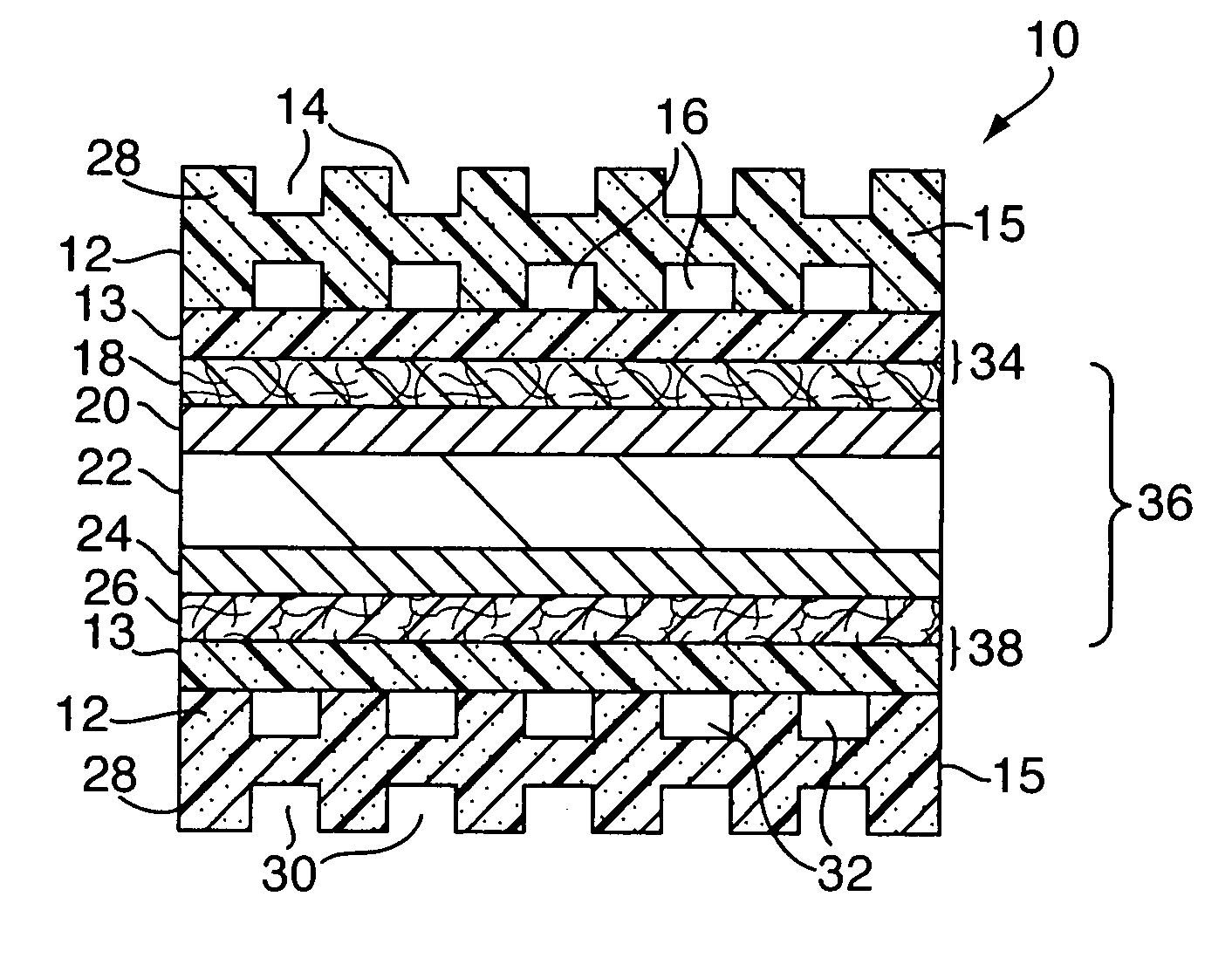Bonded Fuel Cell Assembly and Methods and Systems for Producing the Same
a fuel cell and assembly technology, applied in the direction of electrochemical generators, paper/cardboard containers, manufacturing tools, etc., can solve the problems of affecting the performance of the fuel cell, and reducing the service life of the fuel cell
- Summary
- Abstract
- Description
- Claims
- Application Information
AI Technical Summary
Benefits of technology
Problems solved by technology
Method used
Image
Examples
Embodiment Construction
[0020]The present invention is directed to a method for bonding and compositions for bonding components of an electrochemical cell. As used herein, an electrochemical cell is a device which produces electricity from chemical sources, including but not limited to chemical reactions and chemical combustion. Useful electrochemical cells include fuel cells, dry cells, wet cells and the like. A fuel cell, which is described in greater detail below, uses chemicals reactants to produce electricity. A wet cell has a liquid electrolyte. A dry cell has an electrolyte absorbed in a porous medium or otherwise restrained from being flowable.
[0021]FIG. 1 shows a cross-sectional view of the basic elements of an electrochemical fuel cell, such as fuel cell 10. Electrochemical fuel cells convert fuel and oxidant to electricity and reaction product. Fuel cell 10 consists of an anode flow field plate 12 with open face coolant channels 14 on one side and anode flow channels 16 on the second side, a res...
PUM
 Login to View More
Login to View More Abstract
Description
Claims
Application Information
 Login to View More
Login to View More - R&D
- Intellectual Property
- Life Sciences
- Materials
- Tech Scout
- Unparalleled Data Quality
- Higher Quality Content
- 60% Fewer Hallucinations
Browse by: Latest US Patents, China's latest patents, Technical Efficacy Thesaurus, Application Domain, Technology Topic, Popular Technical Reports.
© 2025 PatSnap. All rights reserved.Legal|Privacy policy|Modern Slavery Act Transparency Statement|Sitemap|About US| Contact US: help@patsnap.com



